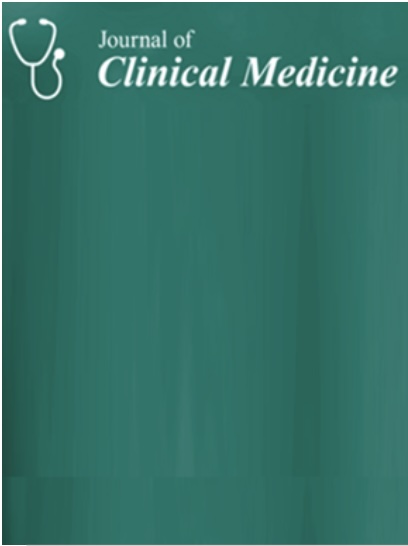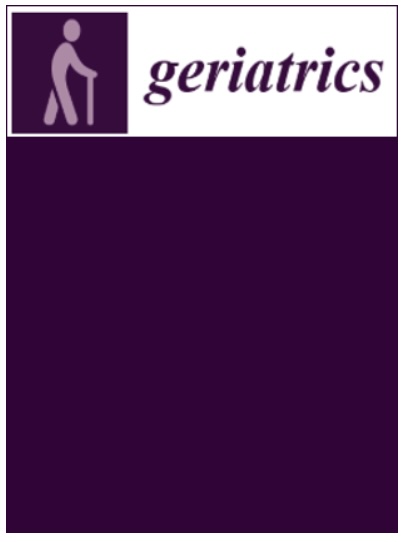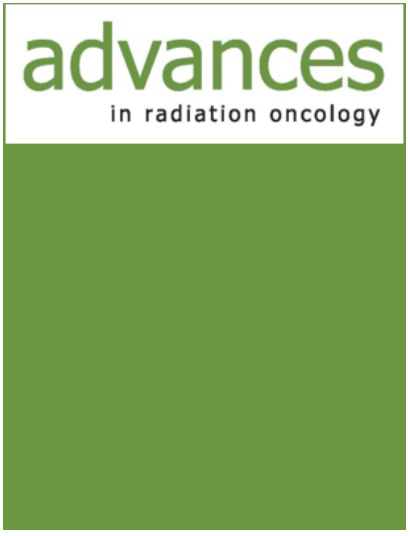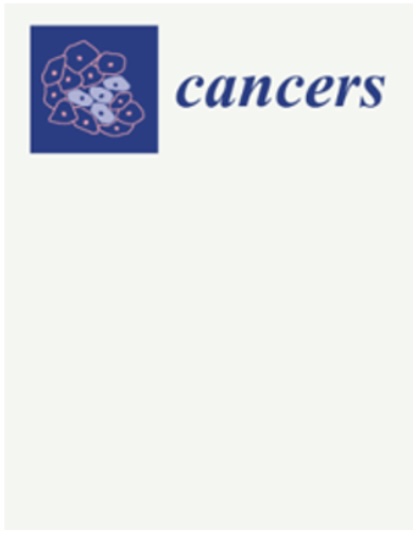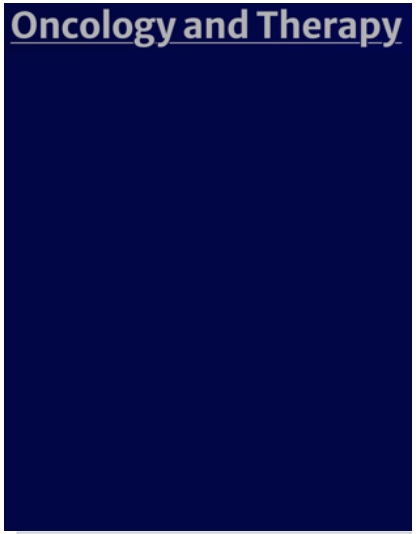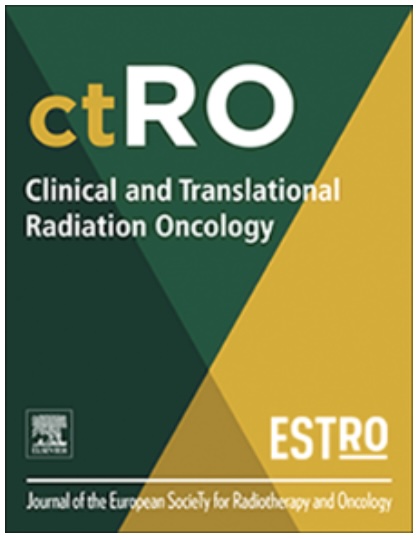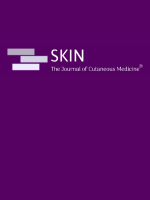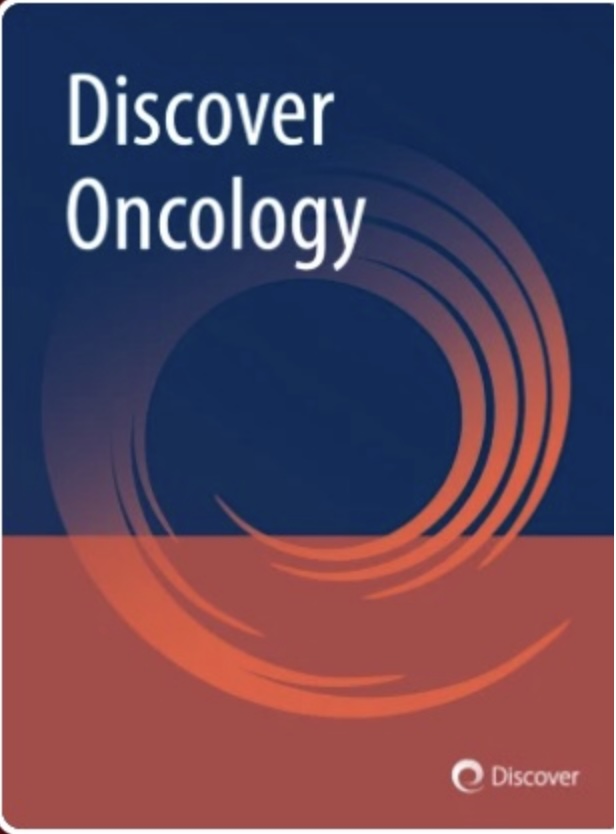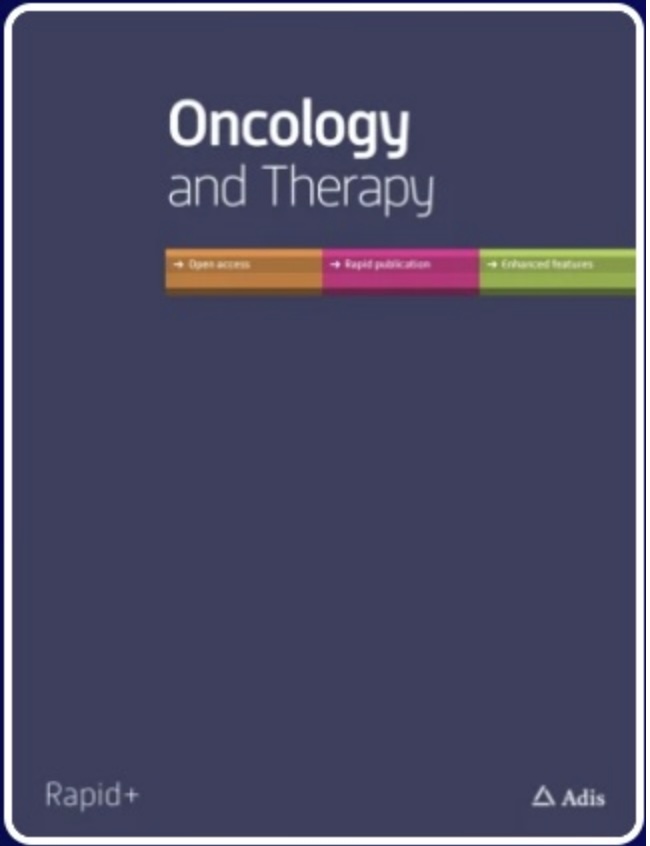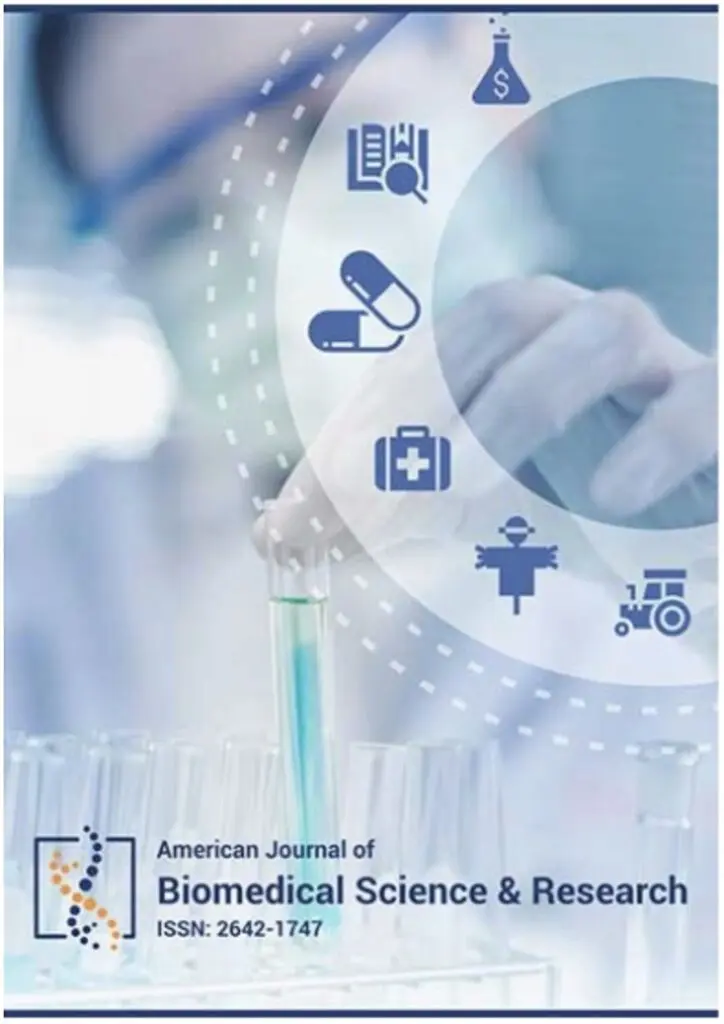
If you have been diagnosed with non-melanoma skin cancer, learn more about a gentler way to treat skin cancer.
Peer-Reviewed Published Research on the Use of Image-Guided Superficial Radiation Therapy
(IG-SRT) in the Treatment of Nonmelanoma Skin Cancer (NMSC)
The Role of Image-Guided Superficial Radiation Therapy in the Treatment of Nonmelanoma Skin Cancer
Zakria, et al. Skin, Vol. 9 No. 1 (2025): January 2025 Issue
IGSRT is a safe and effective treatment for NMSC that often results in highly favorable cosmetic outcomes. It can be considered a first-line treatment option for appropriately selected cases of NMSC.
Show Full Abstract
Background: Basal cell carcinoma (BCC) and squamous cell carcinoma, collectively referred to as nonmelanoma skin cancer (NMSC) are the most common type of skin cancer and can lead to significant morbidity and mortality. There are several treatment options available for NMSC including superficial radiation therapy (SRT), which has improved in recent years with the addition of image guidance (IGSRT). In some cases, patients are not offered IGSRT as a treatment option and additional guidance on its benefits may be beneficial.
Objective: For a panel of expert dermatologists to review published studies on IGSRT for the treatment of NMSC and create consensus recommendations on its use.
Methods: A comprehensive literature search of PubMed, EMBASE, Scopus, and Google Scholar was completed for English-language original research articles on the use of IGSRT to treat NMSC. A panel of six dermatologists with significant expertise in treating NMSC convened to review the articles and create consensus statements based on the available data. A modified Delphi process was used to approve each statement for adoption and a strength of recommendation was assigned using Strength of Recommendation Taxonomy (SORT) criteria.
Results: After screening the articles that met the initial search criteria, 12 articles were distributed to the panelists for review prior to the roundtable discussion. The panel unanimously voted to adopt eight statements with an additional two statements receiving five out of six votes for adoption. Eight of the statements received a strength of recommendation of “A” while two of the statements were given a strength of recommendation of “B” based on SORT criteria.
Conclusion: IGSRT is a safe and effective treatment for NMSC that often results in highly favorable cosmetic outcomes. It can be considered a first-line treatment option for appropriately selected cases of NMSC.
Image-Guided Superficial Radiation Therapy for Basal and Squamous Cell Carcinomas Produces Excellent Freedom from Recurrence Independent of Risk Factors
Agha R, et al. J Clin Med. 2024;13(5835). doi:10.3390/jcm13195835
There was no significant effect of tumor location or sex on freedom from recurrence in IGSRT-treated NMSC. Although there was a significant difference according to tumor stage, freedom from recurrence rates exceeded 99% at all stages.
Show Full Abstract
Background/Objectives: Basal cell carcinomas (BCCs) and squamous cell carcinomas (SCCs) are non-melanoma skin cancers (NMSCs) and the most prevalent cancers in the United States. Image-guided superficial radiotherapy (IGSRT) is a relatively new treatment option that uses high-resolution dermal ultrasound integrated with superficial radiotherapy to improve tumor visualization. IGSRT is a clinically equivalent non-surgical alternative to Mohs micrographic surgery at 2 years of follow-up in early-stage NMSC, but larger cohort studies with longer follow-up periods that allow for analysis of patient outcomes by demographic and disease characteristics are needed.
Methods: This large, retrospective cohort study was conducted to determine the effect of risk factors (tumor location, tumor stage, and sex) on 2-, 4-, and 6-year freedom from recurrence rates in 19,988 NMSC lesions treated with IGSRT, including lesions with complete treatment courses.
Results: Overall freedom from recurrence rates were 99.68% at 2 years, 99.54% at 4 years, and 99.54% at 6 years; rates did not differ significantly by tumor location (head/neck versus other locations, p = 0.9) or sex (male versus female, p = 0.4). In contrast, there was a significant difference in freedom from recurrence rates when analyzed by tumor stage (p = 0.004).
Conclusions: There was no significant effect of tumor location or sex on freedom from recurrence in IGSRT-treated NMSC. Although there was a significant difference according to tumor stage, freedom from recurrence rates exceeded 99% at all stages.
Freedom from Recurrence across Age in Non-Melanoma Skin Cancer Treated with Image-Guided Superficial Radiation Therapy
Farberg AS, et al. Geriatrics. 2024;9(5):114-127. doi:10.3390/geriatrics9050114
For early-stage NMSCs, IGSRT is a clinically equivalent alternative to MMS and statistically significant in superiority to non-image-guided SRT. This study demonstrates that there is no significant effect of age on 2-, 4-, or 6-year freedom from recurrence in patients with IGSRT-treated NMSC.
Show Full Abstract
Non-melanoma skin cancers (NMSCs) are a significant cause of morbidity and mortality; their incidence is increasing most in older patients. NMSCs have traditionally been treated with surgical excision, curettage, Mohs micrographic surgery (MMS), and superficial radiotherapy (SRT). Image-guided SRT (IGSRT) is a treatment option for poor surgical candidates or patients with low- or high-risk, early-stage NMSC who prefer to avoid surgery. This large retrospective cohort study compared 2-, 4-, and 6-year freedom from recurrence in biopsy-proven NMSC lesions treated with IGSRT (n = 20,069 lesions) between patients aged < 65 years (n = 3158 lesions) and ≥65 years (n = 16,911 lesions). Overall freedom from recurrence rates were 99.68% at 2 years, 99.57% at 4 years, and 99.57% at 6 years. Rates did not differ significantly by age (p = 0.8) nor by sex among the two age groups (p > 0.9). There was a significant difference in recurrence among older patients when analyzed by stage (p = 0.032), but no difference by stage in younger patients (p = 0.7). For early-stage NMSCs, IGSRT is a clinically equivalent alternative to MMS and statistically significant in superiority to non-image-guided SRT. This study demonstrates that there is no significant effect of age on 2-, 4-, or 6-year freedom from recurrence in patients with IGSRT-treated NMSC.
Understanding the Importance of Daily Imaging in the Treatment of Non-Melanoma Skin Cancer with Image-Guided Superficial Radiation Therapy
Stricker JB, et al. Dermato. 2024;4:86-96. doi:10.3390/dermato4030010
Increasing and decreasing tumor depth measurements during IGSRT inform dermatologists when adaptive changes in energy (kV), TDF, and dose will result in more efficacy and less toxicity, respectively.
Show Full Abstract
Abstract: Image-guided superficial radiation therapy (IGSRT) combines superficial radiation therapy (SRT) with full dermal visualization (FDV) via high-resolution dermal ultrasound (HRDUS) for the treatment of non-melanoma skin cancer (NMSC). The gold standard for IGSRT delivery includes a comprehensive cancer care model with support for dermatologists from a multidisciplinary team. When delivered in this model, IGSRT can achieve cure rates of 99% for treatment of NMSC. This paper focuses on the benefits of HRDUS used in conjunction with SRT for NMSC. Medical records from 7 dermatology clinics of 883 patients with 1507 cases of NMSC treated with IGSRT between 2017 and 2018 were retrospectively reviewed. In total, 92% of the NMSC lesions showed daily depth fluctuations, 60.32% of lesions did not require changes during therapy, and nearly 40% of lesions required at least one compensatory change during therapy. In total, 83% of NMSC lesions were labeled as high risk based on the 2024 NCCN guidelines. Increasing and decreasing tumor depth measurements during IGSRT inform dermatologists when adaptive changes in energy (kV), TDF, and dose will result in more efficacy and less toxicity, respectively.
Image Guidance is Associated with Improved Freedom From Recurrence After Superficial Radiation Therapy for Nonmelanoma Skin Cancer
McClure E, et al. Adv Radiat Oncol. 2024.
IGSRT offers a paradigm-shifting treatment option for patients with NMSCs – offering statistically significantly improved outcomes compared with standard SRT and a more desirable toxicity profile to surgical options. This study demonstrates that IGSRT is associated with remarkably low recurrence rates, which are statistically significantly improved from the previous generation of SRT and in line with modern outcomes for Mohs micrographic surgery.
Show Full Abstract
Purpose: This is the first study to quantify the 2-year freedom from recurrence for individuals with nonmelanoma skin cancer (NMSC) such as basal cell carcinoma (BCC), squamous cell carcinoma (SCC), and squamous carcinoma in situ (SCCIS) treated with image guided superficial radiation therapy (IGSRT) versus SRT without image guidance.
Methods and Materials: This retrospective cohort study evaluates the 2-year freedom recurrence rate of NMSCs treated by IGSRT (March 2016 to January 2022) and compares it to existing data on NMSCs treated by SRT via 1 sample proportion tests. Individuals >18 years old with biopsy-proven SCC, SCCIS, and/or BCC treated with IGSRT were included in the study, and 1602 patients/2880 treated lesions were followed until January 14, 2022. SRT literature was identified through an Ovid Medline search.
Results: All NMSCs treated by IGSRT in this cohort had an aggregate 2-year freedom from recurrence of 99.23%. The recurrence rate for BCC (N = 1382) was 1.1%, for SCC (N = 904) 0.8%, and for SCCIS (N = 594) 0.0%. These recurrence rates are significantly improved compared with a pooled study that evaluated NMSCs across histology and BCCs alone treated without image guidance (standard SRT) (P < .001).
Conclusions: IGSRT offers a paradigm-shifting treatment option for patients with NMSCs – offering statistically significantly improved outcomes compared with standard SRT and a more desirable toxicity profile to surgical options. This study demonstrates that IGSRT is associated with remarkably low recurrence rates, which are statistically significantly improved from the previous generation of SRT and in line with modern outcomes for Mohs micrographic surgery.
The Impact of Socioeconomic Status and Comorbidities on Non-Melanoma Skin Cancer Recurrence After Image-Guided Superficial Radiation Therapy
Cancers (Basel) 2024 Dec 1;16(23):4037. doi: 10.3390/cancers16234037.
This study demonstrates that there are no significant effects of SES or comorbidity burden on freedom from recurrence in patients with IGSRT-treated NMSC. This supports the expansion of IGSRT in deprived neighborhoods to increase access to care, and IGSRT should be a consideration even in patients with a complex comorbidity status.
Show Full Abstract
Background: Non-melanoma skin cancers (NMSCs) are the most common cancers in the United States. Image-guided superficial radiation therapy (IGSRT) is an effective treatment for NMSCs. Patient comorbidities and socioeconomic status (SES) are known contributors to health disparities. However, the impact of comorbidities or SES on the outcomes of IGSRT-treated NMSCs has not yet been studied. This study evaluated freedom from recurrence in IGSRT-treated NMSCs stratified by SES and the number of comorbidities.
Methods: This large retrospective cohort study evaluated associations between SES (via Area Deprivation Index (ADI)) or comorbidity (via Charlson Comorbidity Index (CCI)) and 2-, 4-, and 6-year year freedom from recurrence in patients with IGSRT-treated NMSC (n = 19,988 lesions).
Results: Freedom from recurrence in less (ADI ≤ 50) vs. more (ADI > 50) deprived neighborhoods was 99.47% vs. 99.61% at 6 years, respectively (p = 0.2). Freedom from recurrence in patients with a CCI of 0 (low comorbidity burden) vs. a CCI of ≥7 (high comorbidity burden) was 99.67% vs. 99.27% at 6 years, respectively (p = 0.9).
Conclusions: This study demonstrates that there are no significant effects of SES or comorbidity burden on freedom from recurrence in patients with IGSRT-treated NMSC. This supports the expansion of IGSRT in deprived neighborhoods to increase access to care, and IGSRT should be a consideration even in patients with a complex comorbidity status.
The State of the Art of Image Guided Superficial Radiation Therapy Treatment of Non-melanoma Skin Cancer in Outpatient Dermatology Clinics in the United States and Review of the Literature
Oncol. Ther. 2025 Mar;13(1):31-48. doi: 10.1007/s40487-024-00310-6.
While the safety and cosmetic benefits of SRT/XRT have been long documented, IGSRT represents a significant leap forward in efficacy (statistically significant) by adding in vivo dermal tumor imaging. Results rival and appear on one study to surpass tumor control obtained with MMS. A contributing factor to the success may be the availability and use of an interdisciplinary team approach that includes dermatologists, radiation therapists, radiation oncologists, and medical physicists. The high tumor control rates, minimal side effects, favorable cosmesis, and ability to treat multiple lesions per session using IGSRT are establishing this modality as a standard first-line therapy for early stage NMSCs in dermatology clinics.
Show Full Abstract
Introduction: Image guided superficial radiation therapy (IGSRT) is a novel technology which combines traditional superficial radiation therapy (SRT) with high resolution dermal ultrasound (HRDUS) to treat non-melanoma skin cancers (NMSC). Since development, IGSRT use has expanded dramatically in outpatient clinics. We review the IGSRT literature and state-of-the-art operating principles in US dermatologic practices.
Methods: A literature search of electronic databases (Medline, Pubmed, Cochrane Library, Science Direct) combined with various authors’ published and unpublished documents, procedures, and clinical experience with IGSRT were synthesized for this paper.
Results: Studies have demonstrated IGSRT consistently delivers high cure rates (> 99%) with low complications for early stage (stage 0, I, or II) squamous cell and basal cell carcinomas. Control rates are statistically superior to non-image guided SRT and external beam radiation (XRT) as well as Mohs micrographic surgery (MMS). This improvement is attributed to in vivo dermal tumor visualization via HRDUS and using an interdisciplinary approach to deliver care. IGSRT use in the dermatologic clinic for early stage NMSCs has become common practice and continues to expand.
Conclusion: While the safety and cosmetic benefits of SRT/XRT have been long documented, IGSRT represents a significant leap forward in efficacy (statistically significant) by adding in vivo dermal tumor imaging. Results rival and appear on one study to surpass tumor control obtained with MMS. A contributing factor to the success may be the availability and use of an interdisciplinary team approach that includes dermatologists, radiation therapists, radiation oncologists, and medical physicists. The high tumor control rates, minimal side effects, favorable cosmesis, and ability to treat multiple lesions per session using IGSRT are establishing this modality as a standard first-line therapy for early stage NMSCs in dermatology clinics.
Image-guided superficial radiation therapy has superior 2-year recurrence probability to Mohs micrographic surgery
McClure E, et al. Clin Transl Radiat Oncol. 2023;43:1-5
The 2-year recurrence probability IGSRT-treated NMSCs is superior to MMS-treated and supports IGSRT as an effective treatment option for individuals with early stage NMSCs.
Show Full Abstract
Introduction: Non-melanoma skin cancers (NMSCs) are the most common cancers in the USA, and their incidence is rising. Mohs micrographic surgery (MMS) is commonly performed to excise NMSCs. MMS replaced superficial radiotherapy (SRT) as a first line treatment, given its superior efficacy. Image-guided superficial radiation therapy (IGSRT) was invented to improve the precision of SRT. This study investigates how the 2-year recurrence probability of IGSRT-treated NMSCs compares to that of MMS-treated lesions.
Methods: This retrospective cohort study compared the 2-year recurrence probability of early stage NMSCs (squamous and basal cell carcinomas (SCCs and BCCs)) treated by IGSRT (2,286 lesions) to data on NMSCs treated by MMS (5,391 lesions) via one sample proportion tests. Medical Subject Headings were used to search PubMed for reports of 2-year recurrence probability rates of NMSCs treated by MMS. Seventeen studies were screened; 14 studies were excluded for lack of 2-year time to event analysis, or irrelevant patient population (non-BCC/SCC study, advanced disease), leaving 3 studies for comparison.
Results: IGSRT-treated NMSCs have a statistically significantly improved 2-year recurrence probability than those treated by MMS, P < 0.001 for pooled data.
Conclusion: The 2-year recurrence probability IGSRT-treated NMSCs is superior to MMS-treated and supports IGSRT as an effective treatment option for individuals with early stage NMSCs.
Analysis of image-guided superficial radiation therapy (IGSRT) on the treatment of early-stage non-melanoma skin cancer (NMSC) in the outpatient dermatology setting
Tran A, et al. J Cancer Res Clin Oncol. 2023.
IGSRT has a high safety profile, can achieve superior cosmesis and should be considered first-line for treating early-stage NMSC tumors as cure rates have been shown to be effective in all NMSC on early follow-up.
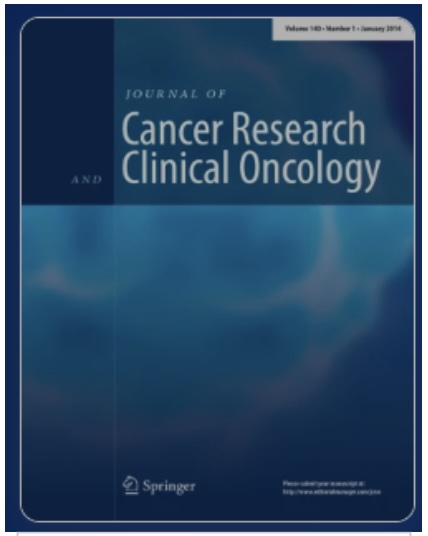
Show Full Abstract
Background: Interest in image-guidance superficial radiation therapy (IGSRT) for the treatment of early-stage non-melanoma skin cancer (NMSC) has resurfaced given its low complication rates, superior cosmesis and local control and cure rates. In addition, it has been recommended by the American Academy of
Dermatology (AAD) for early-stage NMSC in patients who are considered poor surgical candidates.
Methods: 1899 NMSC lesions were treated with energies ranging from 50 to 100 kilovoltage (kV), for a mean of 20.2 fractions, and treatment dose of 5364.4 centigray (cGy). Lesions were treated for a mean of 7.5 weeks and followed for 65.5 weeks. SAS studio was used to conduct Kaplan–Meier analysis to calculate local control rates and account for differences in follow-up intervals. A log-rank test was used to calculate statistical differences between histologies.
Results: Absolute lesion control was achieved in 99.7% of the patients after an average of 7.5 weeks of treatment, with a stable control rate of 99.6% when the follow-up duration was over 12 months. 95% of lesions with toxicity scoring received a Radiation Treatment Oncology Group Toxicity (RTOG) score of 1 or 2.
Conclusion: IGSRT has a high safety profile, can achieve superior cosmesis and should be considered first-line for treating early-stage NMSC tumors as cure rates have been shown to be effective in all NMSC on early follow-up.
High resolution dermal ultrasound (US) combined with superficial radiation therapy (SRT) versus non-image guided SRT or external beam radiotherapy (XRT) in early-stage epithelial cancer: a comparison of studies
Yu L, et all. BMC Cancer. 2023;23(1):98.
Results of US-SRT in local control were statistically significantly superior across the board versus non-image-guided radiation modalities in treatment of epithelial NMSC and should be considered a new gold standard for treatment of early-stage cutaneous BCC, SCC, and SCCIS.
Show Full Abstract
Background: To compare the effectiveness of high-resolution dermal ultrasound (US) guided superficial radiotherapy (SRT) to non-image-guided radiotherapy in the treatment of early-stage Non-Melanoma Skin Cancer (NMSC).
Methods:
A high-resolution dermal ultrasound (US) image guided form of superficial radiation therapy (designated here as US-SRT) was developed in 2013 where the tumor configuration and depth can be visualized prior to, during, and subsequent to treatments, using a 22 megahertz (MHz) dermal ultrasound (US) with a doppler component. We previously published the results using this technology to treat 2917 early-stage epithelial cancers showing a high local control (LC) rate of 99.3%. We compared these results with similar American studies from a comprehensive literature search used in an article/guideline published by American Society of Radiation Oncology (ASTRO) on curative radiation treatment of basal cell carcinoma (BCC), squamous cell carcinoma (SCC) and squamous cell carcinoma in-situ (SCCIS) lesions from 1988 to 2018. Only U.S. based studies with greater than 100 cases with similar patient/lesion characteristics and stages treated by external beam, electron, or superficial/orthovoltage radiation therapy were included in the criteria for selection. The resultant 4 studies had appropriate comparable cases identified and the data analyzed/calculated with regard to local control. Logistic regression analysis was performed comparing each study to US-SRT individually and collectively with stratification by histology (BCC, SCC, and SCCIS).
Results: US-SRT LC was found to be statistically superior to each of the 4 non-image-guided radiation therapy studies individually and collectively (as well as stratified by histology subtype) with p-values ranging from p < 0.0001 to p = 0.0438.
Conclusions: Results of US-SRT in local control were statistically significantly superior across the board versus non-image-guided radiation modalities in treatment of epithelial NMSC and should be considered a new gold standard for treatment of early-stage cutaneous BCC, SCC, and SCCIS.
Analysis of image-guided superficial radiation therapy (IGSRT) on the treatment of early-stage non-melanoma skin cancer (NMSC) in the outpatient dermatology setting
Moloney, et al doi: https://doi.org/10.1101/2023.04.18.23288760
These updated results demonstrate that IGSRT continues to achieve a high level of LC with low complication rates. IGSRT should be considered an attractive first-line option for the non-surgical treatment of NMSC.

Show Full Abstract
Background: Image-guided superficial radiation therapy (IGSRT) using a high resolution dermal ultrasound, is becoming an attractive non-surgical curative treatment option for nonmelanoma skin cancer (NMSC). We previously
reported IGSRT treatment results from a multi-institutional study of 1616 patients with 2917 NMSC lesions showing excellent local control (LC) of 99.3% with mean follow-up of 69.8 weeks (16.06 months).
Methods: This abstract analyzes an additional 93 patients with 133 lesions, updates previous findings with longer follow-up, using Kaplan-Meier statistics, and performs subgroup analysis. A total of 1709 patients with 3,050 Stage 0,
I, and II NMSC lesions treated from 2017 to 2020 were retrospectively analyzed.
Results: Lesions received a median of 20 fractions of 50, 70, or 100 kilovoltage(kV) IGSRT using image guidance. Average follow-up was 25.06 months (108.9 weeks) with a maximum follow up of 65.6 months (285.0 weeks) for the entire cohort. 68 patients expired from unrelated causes with no-evidence of disease (NED) at last follow-up prior to death, thus Disease-Free-Survival (DFS) was 100%. Overall, 3,027 of 3,050 lesions achieved an absolute LC of 99.2%. Overall absolute LC for BCC, SCC, and SCCis was 99.0%, 99.2%, and 99.8%, respectively. No additional late complications were found to date as of January 2022.
Discussion: These updated results demonstrate that IGSRT continues to achieve a high level of LC with low complication rates. IGSRT should be considered an attractive first-line option for the non-surgical treatment of NMSC.
Old Solutions May Be the New Answer: How the Use of Modern Superficial Radiation Therapy Might Address Disparities in Dermatologic Care
Tran A, Yu L. J Dermaol Skin Sci. 2022;4(4):6-8.
Recently, there has been resurfacing interest in SRT, with several studies coupled with clinical trial data showing excellent cosmetic results and comparable local control and cure rates to surgery. Our recent study shows an absolute lesion control that is comparable to MMS (99.7%) after an average of 7.5 weeks of treatment, with a stable control rate of 99.6% when the follow-up duration was over 12 months and 99.4% at 5 years follow-up. By subtype, local control for BCC, SCC and squamous cell carcinoma in situ (SCCIS) at 5-years follow-up was 99.2%, 99.2% and 100%. The treatment was well tolerated with a Radiation Treatment Oncology Group (RTOG) grades of 1 and 2 in 95% of lesions, which is reflective of the extant literature indicating that radiotherapy for NMSC is generally well tolerated with most commonly reported symptoms that are transient, localized and self-limited.
Show Full Abstract
Dear Editor: It is well-known that people of lower socioeconomic status (SES) are more likely to have poorer health outcomes. According to the United States Census Bureau, the poverty rate was 11.4% in 2020, up from 10.5% in 2019; Blacks/African Americans had the highest poverty rate (19.5%), followed by Hispanics (17%). Further, nonmetropolitan Blacks/African Americans had the highest incidence of poverty (30.7%), followed by non-metropolitan American Indians/ Alaska Natives (29.6%)2 . Healthcare disparities are the inequity in access to healthcare, quality of care, or outcomes that vary based on a multitude of factors: sex, race/ethnicity, age, and SES3 , which often determines spatial distribution of areas concentrated with low-income or impoverished (concentrated poverty) individuals and families, and consequently, resources available.
Skin cancer is the most common cancer in the United States (US), and the incidence of melanoma and non-melanoma skin cancer (NMSC) continues to rise. It is estimated that the overall incidence of Basal Cell Carcinoma (BCC) increased by 145% between 1976-1984 and 2000-2010, and the overall incidence of Squamous Cell Carcinoma (SCC) increased 263% over that same period5. BCC is the most common form of skin cancer contributing to 65-75% of skin cancer in whites, but SCC is the most common skin malignancy among African Americans and Asian Indians. Although skin cancer is less common in patients with skin of color, it is associated with greater morbidity and mortality, which may be related to delayed diagnosis. Patients living in non-metropolitan counties have poorer outcomes due to reduced access to cancer treatment and substantially longer travel times; this extends to dermatologic care.
Quality of care has reportedly improved throughout the years, but access to care has not. Dermatologists currently make up 1.3% of the total active US physician workforce, which will unlikely significantly increase due to insufficient funding. Yet, the projected increase in dermatology visits between 2013 and 2025 is 16%, among the highest of all specialties9 . Further, most counties with African, Hispanic, and Native American majorities lack dermatologists. Currently, there is an average 29-day wait time for new patients. However, this may be longer in rural areas/ areas lacking a dermatologist, likely even longer for dermatologists who perform Mohs micrographic surgery (MMS) (~1.8% of all dermatologists)
Radiation for skin cancer has been available since the advent of X-ray radiation in the late 19th century, which was limited in energy and thus targeted superficial cutaneous neoplasms13. Over 100 years ago, superficial radiation therapy (SRT) was developed. By 1975, 55.5% of dermatology offices in North America either had SRT or Grey Renz Devices available for use, and 44.3% of dermatologists reported regularly using them in the outpatient setting14. Despite the technological advancements (high-resolution ultrasound guidance) over the years and ample evidence demonstrating its efficacy for treating NMSC, it has declined in use and is not taught in dermatology residency programs since surgical intervention became the gold standard. Recently, there has been resurfacing interest in SRT, with several studies15, 16 coupled with clinical trial data showing excellent cosmetic results and comparable local control and cure rates to surgery14. Our recent study shows an absolute lesion control that is comparable to MMS (99.7%) after an average of 7.5 weeks of treatment, with a stable control rate of 99.6% when the follow-up duration was over 12 months and 99.4% at 5 years follow-up16. By subtype, local control for BCC, SCC and squamous cell carcinoma in situ (SCCIS) at 5-years follow-up was 99.2%, 99.2% and 100%16. The treatment was well tolerated with a Radiation Treatment Oncology Group (RTOG) grades of 1 and 2 in 95% of lesions16, which is reflective of the extant literature indicating that radiotherapy for NMSC is generally well tolerated with most commonly reported symptoms that are transient, localized and self-limited15. Further, it is often covered by insurance and can be administered by radiation therapists across many settings: general medical/surgical/ specialty hospitals, outpatient care/cancer centers, radiation therapy facilities, outpatient dermatology/ physician offices, and medical and diagnostic laboratories. Additionally, although melanoma is primarily considered a surgical disease, radiotherapy has been shown to be useful palliatively as it may help sensitize melanotic lesions to immunotherapy and provide symptom palliation in metastatic cases17. Despite it being deemed radioresistant or responding atypically to radiotherapy due to it having a wide “shoulder” in cell survival curves (high repair efficacy at low doses), doses given with higher fractionations overcomes this “shoulder” as it responds better to larger radiation fractions17. The etiology of healthcare disparities is multifactorial, and one treatment modality cannot completely eradicate this longstanding and pervasive issue. However, disparities in access to oncodermatologic care may be addressed through effortful/collaborative care involving dermatologists, general or specialized providers dealing with skin cancer (i.e., surgeons /ENT specialists), radiation oncologists, and radiation therapists.
Local control comparison of early-stage non-melanoma skin Cancer (NMSC) treated by superficial radiotherapy (SRT) and external beam radiotherapy (XRT) with and without dermal image guidance: a meta-analysis
Yu L, et al. Discov Oncol. 2022;13(1):129.
US-SRT is statistically superior to non-image-guided radiotherapies for NMSC treatment. This modality may represent the future standard of non-surgical treatment for early-stage NMSC.
Show Full Abstract
Background: Various treatments exist for non-melanoma skin cancer (NMSC), but the mainstay is surgical removal. Superficial radiotherapy (SRT) is one non-surgical technique that has been used for over a century but fell out of favor due to the advent of Mohs micrographic surgery (MMS). A new technology that combines a 22 megahertz (MHz) dermal ultrasound with SRT (US-SRT) enables tumor visualization before, during, and after treatment, and demonstrates increased cure rates and reduced recurrences.
Methods: We conducted a meta-analysis comparing the local control (LC) of four studies using traditional non-image-guided forms of radiotherapy for NMSC treatment to two seminal studies utilizing high-resolution dermal ultrasound-guided SRT (HRUS-SRT). The four traditional radiotherapy studies were obtained from a comprehensive literature search used in an article published by the American Society of Radiation Oncology (ASTRO) on curative radiation treatment of basal cell carcinoma (BCC), squamous cell carcinoma (SCC) and squamous cell carcinoma in-situ (SCCIS) lesions. The meta-analysis employed a logit as the effect size indicator with Q-statistic to test the null hypothesis.
Results
LC rates for the 2 US-SRT studies were statistically superior to the 4 traditional therapies individually and collectively. When stratified by histology, statistically superior outcomes for US-SRT were observed in all subtypes with p-values ranging from p < 0.0001 to p = 0.0438. These results validated an earlier analysis using a logistic regression statistical method showing the same results.
Conclusion: US-SRT is statistically superior to non-image-guided radiotherapies for NMSC treatment. This modality may represent the future standard of non-surgical treatment for early-stage NMSC.
The Treatment of Non-Melanoma Skin Cancer with Image-Guided Superficial Radiation Therapy: An Analysis of 2917 Invasive and In Situ Keratinocytic Carcinoma Lesions
Yu L, et al. Oncol Ther. 2021;9(1):153-166.
IGSRT should be considered as a first-line option for treating NMSC tumors in suitable early stage patients. Cure rates observed in this initial period of follow-up are similar, and potentially superior with further follow-up, to traditional superficial radiation therapy (SRT) and surgical options.
Show Full Abstract
Introduction: An image-guided form of superficial ionizing radiation therapy (IGSRT) is becoming a commonly used alternative to surgery for non-melanoma skin cancer (NMSC). However, there is little literature evidence evaluating the efficacy and safety of this approach. This study evaluates the efficacy and safety of IGSRT in treating a large number of patients with NMSC.
Methods: The medical records of 1632 stage 0–II patients with 2917 invasive and in situ NMSC lesions treated from years 2017 to 2020 were reviewed. No patients had clinical evidence of regional lymph node or distant disease at presentation.
Results: Treatment, guided by pre-treatment ultrasound imaging to adjust radiation energy and dose, combined with a fractionation treatment schedule of 20 or more treatment fractions, was safe and well tolerated. Of 2917 NMSC lesions treated, local tumor control was achieved in 2897 lesions, representing a 99.3% rate of control.
Conclusion: IGSRT should be considered as a first-line option for treating NMSC tumors in suitable early stage patients. Cure rates observed in this initial period of follow-up are similar, and potentially superior with further follow-up, to traditional superficial radiation therapy (SRT) and surgical options.
Enhancing Cosmesis While Achieving High Cure-Rates For Early-Stage Non-Melanoma Skin Cancer In The Outpatient Dermatology Clinic Using Novel Non-Invasive Modality
Yu, et al Enhancing Cosmesis While Achieving High Cure-Rates For Early-Stage Non-Melanoma Skin Cancer In The Outpatient Dermatology Clinic Using Novel Non-Invasive Modality. Am J Biomed Sci & Res. 2021 – 12(6). AJBSR.MS.ID.001803. DOI: 10.34297/AJBSR.2021.12.001803
IGSRT should be considered as a first-line option for treating NMSC tumors in suitable early stage patients. Cure rates observed in this initial period of follow-up are similar, and potentially superior with further follow-up, to traditional superficial radiation therapy (SRT) and surgical options.
Show Full Abstract
Introduction: Non-Melanoma Skin Cancer (NMSC) is generally treated in dermatology offices using surgical techniques.
Objectives: We evaluate the feasibility, tolerance, effectiveness and cosmesis using an office-based non-surgical modality for NMSC.
Methods: 93 patients with 133 pathologically confirmed early stage invasive and in-situ NMSC lesions treated with Image-Guided Superficial Radiation Therapy (IGSRT) were retrospectively analyzed. All lesions received a median of twenty fractions of 50 or 70 kilovoltage(kV) IGSRT. Energy selection and subsequent kV changes were determined by ultrasound imaging. RTOG toxicity scoring was used. Treatment interruption was defined as greater than 2 weeks.
Results: Median age was 69. At an average follow-up of 16.23 months, 92 of 93 patients were alive. One patient expired from unrelated causes while no evidence of disease (NED). 132 of 133 lesions achieved local control (LC) with one lesion recurring at 12.9 months. Absolute LC was 99.2%, overall Kaplan-Meier LC (KM LC) was 98.95% at 30.8 months, and Disease Free Survival (DFS) was 100%. Acute toxicities were mild with RTOG grades 0, 1 or 2 in all lesions with no grade 3 or 4 toxicity. Cosmesis was felt to be excellent or very good (VG) by the clinicians with no fair/poor cosmesis. There were no severe toxicities or complications requiring treatment interruptions.
Conclusion: Office-based IGSRT is feasible, safe, and easily tolerable. On early follow-up, this 20-fraction regimen is highly effective with an overall absolute LC of 99.2%, and an overall KM LC of 98.95% at 30.8 months, with a 100% DFS. It achieves excellent or very good cosmesis, and patients are very happy with the results and availability of this nonsurgical option. IGSRT is an attractive non-invasive therapeutic option for NMSC and provides another valuable tool for dermatologists. Longer follow-up is underway.

